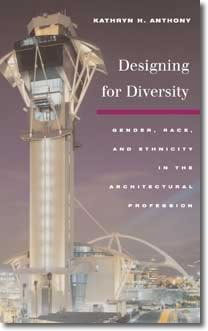

Associate Editor
The National Organization of Minority Architects (NOMA) is set to gather for its annual conference in Fort Lauderdale this fall, eager to welcome a wider diversity of nationalities and races into its fold. To further its efforts, NOMA is seeking to expand its reach through its conference program, which will focus on "Globalization," the theme of the group's 30th international conference and exposition.
Kathryn Anthony, author of Designing for Diversity: Gender, Race, and Ethnicity in the Architectural Profession [read the book review published in AIArchitect], the recently published and acclaimed treatise on women and minorities in architecture will be the keynote speaker. Vendor participation is on schedule to exceed last year's turnout.
 "The
theme grew out of the philosophy that we as minority architects—and
architects in general—need to be inclusive of collateral architecture
organizations both nationally and globally," said Kenneth Martin,
AIA, NOMA president.
"The
theme grew out of the philosophy that we as minority architects—and
architects in general—need to be inclusive of collateral architecture
organizations both nationally and globally," said Kenneth Martin,
AIA, NOMA president.
The conference theme and its slogan, "United We Design," also speak to the events of last September and NOMA's efforts to draw representatives from international architecture groups to insure the inclusion of all minority groups represented within the larger architectural community worldwide.
Martin said the group is trying to amplify its efforts to bring minority groups together to understand each of their goals and objectives and appreciate the challenge of practice in America and around the world.
Their hard work seems to be succeeding: the conference is attracting the heads and representatives of several international groups, including delegates from the Caribbean and Europe.
Preliminary Conference
Agenda
Martin, principal of Kenneth Martin Architects in Holly Springs, N.C.,
and his team have worked closely with the Fort Lauderdale convention multicultural
business officials to make sure all minority groups can learn from and
have the opportunity to participate in the convention program.
Organizers are planning a keynote and speaker sessions, panel discussions, and technical seminars that address the challenges of practice and leadership. Speakers who have been confirmed will include AIA President Gordon Chong, FAIA, and former AIA President Raj Barr-Kumar, FAIA. The National Organization of Minority Architect Students (NOMAS) will have their own agenda and gatherings.
The conference also will embrace the local community. Students will have the opportunity to participate in a design competition for a new cultural arts center to be built in Lauderhill, a small, predominantly black city adjacent to Fort Lauderdale. Martin said this competition gives the public exposure to minority architects and brings information about architecture to a younger society. "We need to be much more visible to school-age children so they can see what minority architect do and perhaps aspire to be one someday."
In response to requests and to celebrate NOMA's 30th anniversary, a post-convention cruise is planned.
 Many
challenges remain the same
Many
challenges remain the same
Thirty years ago, the founding members of NOMA met in Nassau, Bahamas,
to devise a plan of action to bring the work of minority architects to
the mainstream architectural community, NOMA reports.
Today, those same architects, as well as a new generation of practitioners are still working to make that goal a reality, Martin said. "We may have existed for 30 years, but the challenges remain the same," he said. For example, statistics still point to a homogenous profession. Less than 1 percent of AIA architects are African-American, just 3 percent of AIA architects are Asian-American, just 2 percent of AIA architects are Latino, less than 1 percent of AIA architects are Native American, and only 11 percent of AIA architects are women, according to the AIA Diversity Committee.
The solution, he noted, is a long-term outreach to educate the public and fellow professionals about the abilities and creativity of minority architects and the benefits of inclusion.
He said it is also important to continue the dialogue that began at the AIA national component headquarters last year when 2001 AIA President John D. Anderson, FAIA, and Chong met with NOMA officials to discuss diversity in the profession. At that time, NOMA representatives challenged the AIA to increase the numbers of minorities who pursue architectural registration.
Martin said he is enthusiastic about NOMA's anniversary and hopes to improve the profession by formalizing the camaraderie that enhances an architect's personal life. He said he knows that the conference is, in large measure, preaching to the choir but hopes that the message will be reinforced and disseminated.
Copyright 2002 The American Institute of Architects. All rights reserved.
![]()
|
Read a review of Designing for Diversity, by keynote speaker Kathryn Anthony. Click here for conference updates and more information about NOMA. |
|